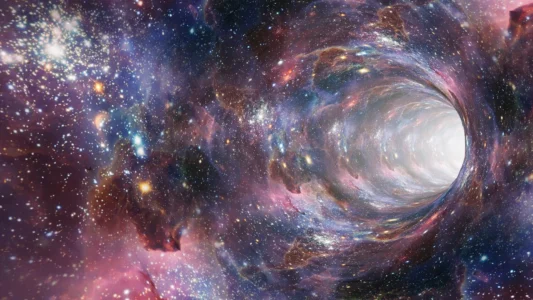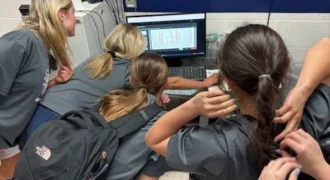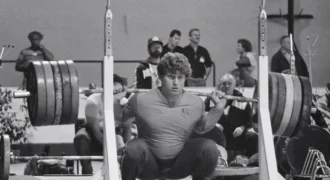Step into the world of cosmic mysteries—where gravity warps time, space twists in impossible ways, and reality teeters on the edge of imagination. Black Holes and Wormholes & Time Travel, these aren’t scenes from a sci-fi blockbuster—they’re concepts grounded in physics, albeit ones that still challenge our understanding of the universe.
Today, we explore the tantalizing trio: black holes, wormholes, and time travel. Are they purely fictional fantasies, or could science eventually turn them into fact?
Black Holes: The Gravity Wells of the Universe
Let’s begin with what we know for sure: black holes are real.
A black hole is a region of space where gravity is so intense that nothing—not even light—can escape its pull. Born from the collapsed core of a massive star, black holes are cosmic vacuum cleaners, warping everything around them, including time.
According to Einstein’s General Theory of Relativity, space and time are part of a fabric known as spacetime. Massive objects like stars bend this fabric. But black holes? They practically rip it apart.
In 2019, the world saw the first-ever image of a black hole—thanks to the Event Horizon Telescope. This glowing halo surrounding a dark core confirmed what theory had predicted for decades.
But here’s where things get interesting.
As you approach a black hole’s event horizon (the point of no return), time itself slows down. To an outside observer, it appears as though time is frozen at the event horizon. This phenomenon, known as gravitational time dilation, forms one of the key bridges between real physics and the idea of time travel.
Could a black hole act like a natural time machine?
Time Travel: The Science Behind the Fantasy
Time travel has captivated humanity for centuries. H.G. Wells’ The Time Machine, Christopher Nolan’s Interstellar, and countless other pop culture references have helped cement it in our collective imagination.
But is it possible—scientifically?
➤ Forward Time Travel
This one is more plausible than you think.
Thanks to Einstein’s theory of relativity, we already know that time isn’t constant—it’s relative. Astronauts aboard the International Space Station age slightly slower than people on Earth because they experience less gravity and greater speed. This effect is minuscule, but it’s real.
In theory, if a spaceship could travel at near-light speed, the people inside would age much slower than those on Earth. Spend a few months on that ship, and you might return to find decades passed on Earth. Congratulations—you’ve traveled into the future.
➤ Backward Time Travel
Now here’s where things get wild—and controversial.
Traveling backward in time opens up paradoxes, like the famous grandfather paradox: if you go back in time and prevent your grandparents from meeting, would you cease to exist?
Most physicists agree that backward time travel violates causality (the cause-and-effect principle) and likely isn’t possible—at least not with our current understanding of physics. But there are theoretical loopholes. And that brings us to wormholes.
Wormholes: Theoretical Gateways Through Spacetime
Imagine a tunnel connecting two points in space—and maybe even time. That’s a wormhole.
The idea of wormholes (or Einstein-Rosen bridges) comes straight out of Einstein’s equations. If spacetime can bend and curve, why not fold and connect?
Picture the universe as a two-dimensional sheet of paper. Fold the paper so two distant points touch—and you’ve essentially created a shortcut. A wormhole could, in theory, do this in three-dimensional space.
Here’s the catch: wormholes are highly unstable. They would collapse instantly unless held open by a mysterious form of energy known as exotic matter—a substance with negative energy density, something we’ve never observed in usable quantities.
Still, wormholes remain an active area of research in theoretical physics. Some models even suggest wormholes could allow for time travel, if one end is accelerated to near-light speed and then brought back—creating a difference in time between the two ends.
Sound confusing? It is. But scientists like Kip Thorne (whose work inspired Interstellar) have developed complex mathematical models to explore these possibilities.
Science vs. Sci-Fi: Where Do We Stand?
So, how much of this is grounded in science, and how much is still science fiction?
- Black holes: 100% real, proven by observation and math.
- Time dilation (forward time travel): Real and measurable, though practical time travel remains challenging.
- Wormholes: Theoretical, unproven, and currently beyond our technological capabilities.
- Backward time travel: Largely speculative, with paradoxes that science hasn’t resolved.
- Exotic matter: Hypothetical, never observed.
Despite these limitations, the pursuit of answers drives physics forward. Theoretical research, quantum mechanics, and ongoing discoveries in astrophysics continue to blur the line between imagination and reality.
A Final Thought: Wonder as a Catalyst
We may be centuries away from building a time machine or stabilizing a wormhole, but the act of wondering—of asking “what if?”—has always been the seed of discovery.
Much of what was once pure fiction is now part of scientific fact. Remember: black holes were once laughed off as impossible curiosities. Now, they’re on the covers of science journals.
Today’s sci-fi dream might just be tomorrow’s physics textbook.
Conclusion: Gazing Into the Unknown
In the end, black holes, wormholes, and time travel represent something more than just astrophysical oddities—they symbolize our drive to understand the unknown.
They remind us that the universe is far stranger—and more magnificent—than we ever imagined.
Whether we ever travel through time or not, one thing is certain: science will keep pushing boundaries, and we’ll keep asking the biggest questions imaginable.
And maybe, just maybe, someday the answer won’t be “science fiction”—but simply “science.”







